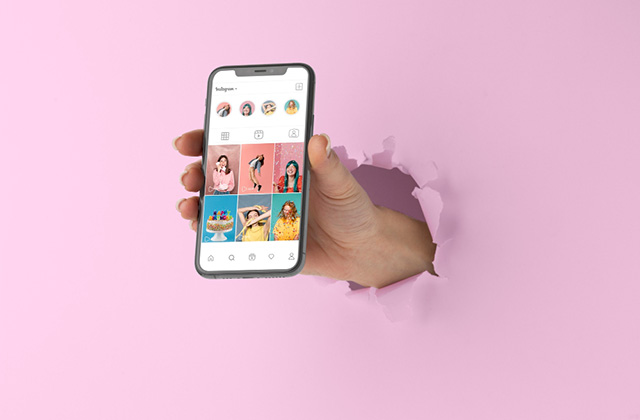Introduction
Social media is an incredibly powerful tool for building your business, but it can also be a source of stress and frustration. It’s easy to get caught up in the latest trends and algorithms, and before you know it hours have passed with no progress made on your goals. In this post, we’ll go over some strategies for using social media effectively so that you can maximize its potential for growing your audience.
Pick the Right Social Media Platform
Here are the top social media platforms that social media management agency use and how to use them:
- Facebook. A great place to start, as it’s where you can build an audience with your existing fans. You can connect with them through posts, groups and events.
- Instagram. The visual nature of this platform makes it perfect for businesses that have strong visual content such as photography or illustrations. It also allows for direct engagement with followers by asking questions and getting feedback from your audience in a non-intrusive way (i.e., not posting “can we get 1k likes on this?” all the time).
- LinkedIn. This platform is geared toward professionals so it’s best used by companies that offer services or products aimed at professional audiences (e.g., accounting firms). LinkedIn is more about sharing articles than personal updates but if you’re looking for leads then try posting a link to an article relevant to your industry or business type; include some commentary about why you think others should read it too!
- Twitter has been around since 2006 so there’s no excuse not knowing how to best use the platform today! While Twitter can be used by any kind of business — big or small — its primary function is connecting brands with their customers via real-time conversations (aka tweets!). Tweets also give brands exposure beyond just those followers who choose follow back because users frequently retweet interesting content they see while browsing other accounts’ feeds which expands reach exponentially over time! Don’t forget though: being active on here requires daily posting so plan accordingly 🙂
Define Your Goals
The first step in developing a social media strategy is to define your goals. What do you want to achieve? Are you trying to attract new customers, build brand awareness, or increase sales? Your business needs should determine the types of social media channels and content that will work best for you.
For example, if your goal is to build brand awareness and acquire new customers through social media marketing, then Facebook ads could be an effective option because they allow you to target specific audiences based on their interests or location. However, if your goal is to increase sales by driving more traffic back to your website after someone sees one of your paid ads on Facebook, then it might make more sense for reach out directly through email marketing instead—since this would generate leads that aren’t necessarily looking for information about products from competitors (which could lead them away).
Aim for Meaningful Interactions Over Impressions
You should aim for meaningful interactions over impressions.
Don’t get caught up in the numbers game.
If you have 10,000 followers but your engagement rate is low, then it doesn’t really matter how many people are following you. In fact, if they’re not engaged with your content, they’re going to unfollow or mute you anyway! The key is to focus on building relationships instead of worrying about reaching a certain number of followers or subscribers. Focus more on creating content that engages with your audience and less on growing your follower base as quickly as possible by using spammy tactics like buying fake followers.
Have a Plan
- Have a Plan
Social media is not something you can just do and see what happens. You need to have a plan in place before you start. This will help ensure that you are getting the results that you want, and not just wasting time on the platform.
- Define Your Audience
You need to know who your audience is before starting any type of social media campaign or strategy, otherwise it will be impossible for you to know how well it’s working or what kind of content they like seeing from your brand. If this seems overwhelming at first, start by focusing on one demographic (i.e., moms), then expand out from there once you get more comfortable with the process. But remember: The best way to define an audience for yourself is through research! Don’t guess—find out!
Create Great Content That Connects
- Create Great Content That Connects
- You need to create content that connects with your audience, is valuable to them, engaging and relevant to their interests. This can include things like blog posts, infographics, ebooks etc. You need to make sure that you’re providing something unique or different than what else is out there as well as making sure it’s visually appealing and easy for people to read. For example if you are creating a blog post about how blueberries can help prevent cancer then make sure you provide great information on why this is true in an easy-to-understand way that people will actually read!
Don’t Rely on Paid Ads
Paid advertising is a good way to get your brand or product in front of people, but it’s not the only way. In fact, I would go so far as to say that paid advertising has some major drawbacks:
- They’re expensive. You’ll have a hard time finding any form of marketing that doesn’t cost money, but paid ads are often prohibitively expensive compared with other types of marketing like organic social media. If you’re just starting out and don’t have much cash on hand yet, this can be a major obstacle for you—especially if you want to start building an audience right away (more on this later).
- They’re ineffective at attracting new customers/consumers/followers/etc., especially over extended periods of time—at least five years according to one study by HubSpot and Salesforce from 2015.* Paid ads don’t work unless they’re targeted at specific audiences; otherwise they’ll just annoy viewers by showing up repeatedly in places where their interests aren’t aligned with yours. This means there’s no guarantee that anyone will see what message you’re trying convey through these ads anyway!
Take your time and really figure out a strategy that works for you, because social media is truly one of the most powerful tools for growing your business.
Social media is a powerful platform for growing your business. It can be a lot of work to get started, but the payoffs are worth it. You need to be patient with yourself and consistent with your posts if you want to see results. In addition, it’s important not to expect immediate results from social media when you first start using it – there are no shortcuts or tricks here—just hard work!
Conclusion
Social media has revolutionized the way we connect to our customers. It is a great tool for reaching out to new audiences and building relationships with existing ones. The best part about social media is that it doesn’t cost anything, so you don’t have anything to lose by trying it out! More tips about doing a follow ups with your followers.




